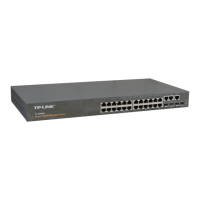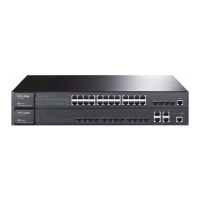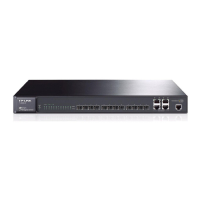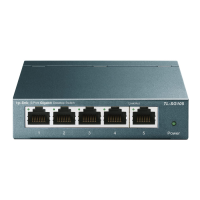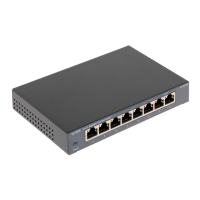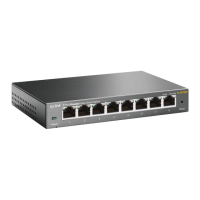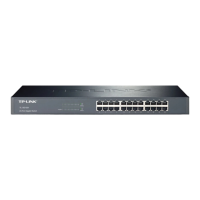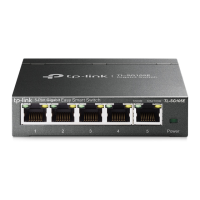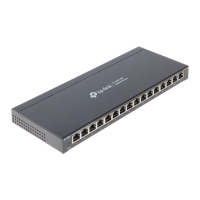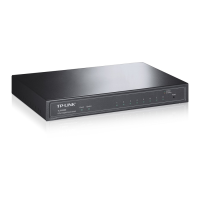187
Example
Bind the filtering address ID 2-6 to port 3:
TL-SG5428(config)# interface gigabitEthernet 1/0/3
TL-SG5428(config-if)# ip igmp snooping filter addr-id 2-6
ip igmp snooping filter(global)
Description
The ip igmp snooping filter command is used to add or modify the multicast
filtering IP-range. To delete the multicast filtering IP-range, please use no ip
igmp snooping filter command.
Syntax
ip igmp snooping filter id start-ip end-ip
no ip igmp snooping filter id
Parameter
id —— IP-range ID, ranging from 1 to 30.
start-ip —— The start multicast IP of the IP-range.
end-ip —— The end multicast IP of the IP-range.
Command Mode
Global Configuration Mode
Example
Modify the multicast IP-range whose ID is 3 as 225.1.1.1~226.3.2.1:
TL-SG5428(config)# ip igmp snooping filter 3 225.1.1.1 226.3.2.1
ip igmp snooping filter(interface)
Description
The ip igmp snooping filter command is used to configure Port Filter. To return
to the default configuration, please use no igmp snooping filter command.
When the switch receives IGMP report message, it examines the multicast
filtering IP ID configured on the access port to determine if the port can join the
multicast group. If the multicast IP is not filtered, the switch will add the port to
the forward port list of the multicast group. Otherwise, the switch will drop the
IGMP report message. In that way, you can control the multicast groups that
users can access.
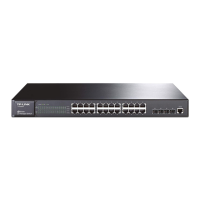
